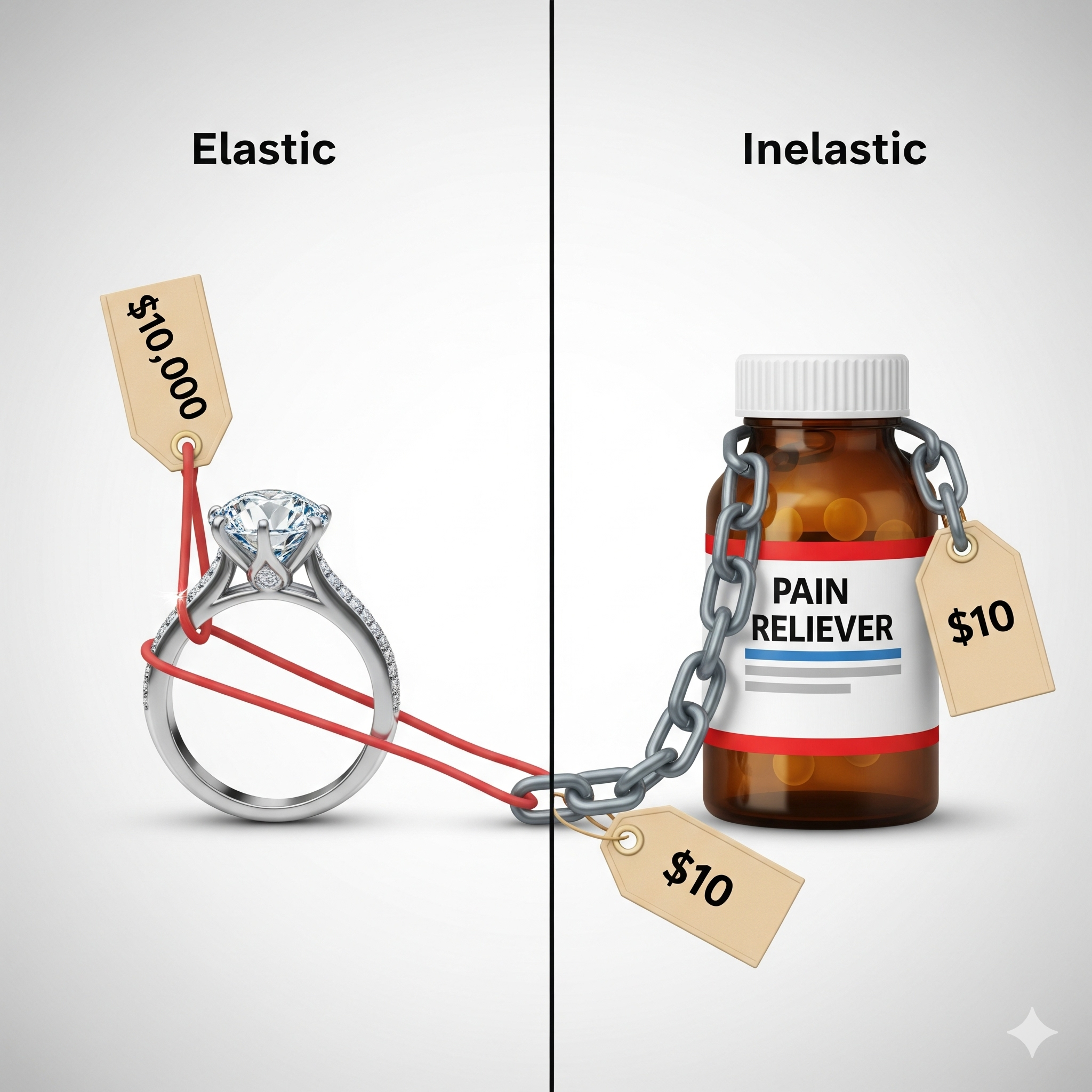Price elasticity refers to the measure of how much the quantity demanded or supplied of a good changes in response to a change in its price.
The formula for the price elasticity of demand is below.
| price elasticity | |
| quantity of the demanded good | |
| price of the demanded good |
If the quantity demanded changes considerably due to a change in price, the product is elastic. However, if the quantity demanded is minimally changed due to change in price, the product is inelastic.
Price elasticity significantly impacts different markets by influencing both consumer behavior and business strategies. Here’s how:
1. Consumer Behavior:
- Elastic Goods: When the price of an elastic good changes, consumers quickly adjust their demand. For example, if the price of a luxury item like a high-end smartphone drops, more people will buy it. Conversely, if the price increases, demand will sharply decline1.
- Inelastic Goods: For inelastic goods, such as essential medications or basic utilities, demand remains relatively stable regardless of price changes. Even if prices rise, consumers will still purchase these goods because they are necessities2.
2. Business Strategies:
- Pricing Decisions: Companies with elastic products often compete on price and need to maintain high sales volumes to stay profitable. They might use discounts and promotions to attract customers3.
- Revenue Management: Businesses with inelastic products have more flexibility in setting prices. They can increase prices without significantly reducing demand, which can lead to higher revenues3.
3. Market Dynamics:
- Supply Adjustments: In markets with elastic goods, suppliers may reduce production if prices fall, as it becomes less profitable to produce large quantities1. Conversely, if prices rise, they might increase production to capitalize on higher profits.
- Competition: Elastic markets tend to have more competition, as consumers can easily switch to alternatives if prices rise. Inelastic markets often have fewer competitors, as the products are essential and have fewer substitutes
Examples of elastic and Inelastic goods:
Elastic Good:
Clothing is a common example of an elastic good. When the price of clothing drops, consumers are likely to buy more, and when prices rise, they tend to buy less. This is because there are many substitutes available, and clothing is not a necessity1.
Inelastic Good:
Insulin is an example of an inelastic good. For people with diabetes, insulin is essential for their health. Even if the price of insulin increases, the demand remains relatively unchanged because it is a necessity2.


Leave a Reply